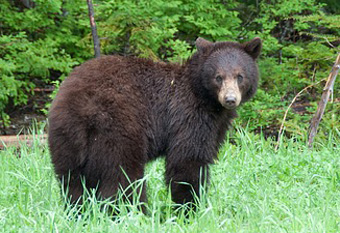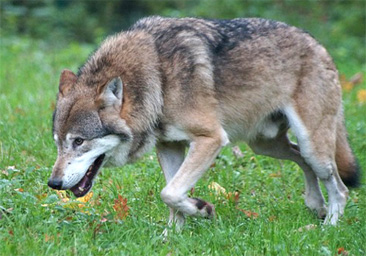The animal world of Spain is extremely rich in species. Especially in the sparsely populated mountain regions and vast wetlands, many species have survived, which have been exterminated in other more densely populated regions in Europe. In recent years there have been extensive conservation programmes in Spain to protect the native fauna. While the first successes are being achieved (the number of specimens of many rare animal species is increasing again), my critics say that much more needs to be done. Above all more money, conversions in agriculture and the stop of building projects (houses, hotels and roads) is demanded again and again. While left-wing local governments, as in Mallorca a few years ago, have issued far-reaching building bans, conservative politicians are calling for an end to building bans.
Gibraltar tour from Costa del Sol and Malaga (bus tour, day trip): >>> More info and booking
In this article I would like to briefly introduce the most known mammals in the fauna of Spain:
Brown bear in Spain: Probably hardly any animal in Spain is reported more than the brown bear. There are two populations, both are located in northern Spain. Nearly 100 bears live in the Cantabrian mountains in the northeast of Spain. The number of brown bears in these difficult to access and steep mountains and valleys is considered to be growing. The population is relatively secure. The situation in the Pyrenees is more problematic. About 20 bears still live here (including the French Pyrenees).

The number is too small to be sufficient in the long term. That is why bears from other regions of Europe are also being settled. The brown bears are very shy and rarely attack humans. If they have enough food, they avoid all human settlements.
Brown bears (Ursus arctos) used to be abundant in many parts of Europe, including Spain. These majestic animals can be found in the Pyrenees, Cantabria, Sierra Morena, etc. However, hunting, habitat loss, and other human activities caused Spanish brown bear populations to decline rapidly over the centuries.
By the mid-20th century, the Spanish brown bear population was on the verge of extinction, with only a few dozen specimens remaining in the Cantabrian mountains. Serious efforts to protect and conserve the bears began at this time, including the establishment of a sanctuary in the Somied mountains in 1988. Since then, other sanctuaries have been established in the Cantabrian mountains, such as: B. the Natural Park of Fuentes del Narcea and the Natural Park of Redes.
Today, the Spanish brown bear population is still endangered and there are only a few hundred left in the Cantabrian mountains. These bears are isolated from other European populations, so their protection is particularly important. The Cantabrian brown bears are genetically distinct from other brown bear populations and adapted to the region’s unique mountainous habitat.
Efforts to protect and conserve the Spanish brown bears include habitat restoration, reducing human-bear conflict, and establishing reserves where hunting is prohibited. Habitat restoration efforts have focused on reforestation, controlling erosion and maintaining connections between forested areas. Reducing human-bear conflict includes educating local communities about bear behavior and taking steps to discourage bears from preying on crops and livestock.
Despite these efforts, populations remain vulnerable and face constant threats such as habitat fragmentation, poaching and climate change. Habitat fragmentation from roads, urbanization, and other human activities can make it difficult for bears to move between forested areas, leading to inbreeding and loss of genetic diversity. Yes. While poaching is illegal, it remains a problem in some regions. Climate change is affecting bear habitats by altering the schedule of seasonal events such as flowering and hibernation.
Overall, the conservation of brown bears in Spain remains an important issue and further efforts are needed to ensure the survival of this iconic species. In addition to the above conservation measures, ongoing research is needed to better understand the biology and behavior of the brown bears in Spain and to find new ways to protect them. The brown bear is an important symbol of Spain’s natural heritage.
Iberian Capricorn in Spain: After the brown bear, the Iberian ibex is probably the most popular representative of the Spanish fauna. Especially the dramatic extinction of a subspecies made sad headlines 10 years ago. It was originally found in all mountain regions of Spain and Portugal. There are or were four subspecies, two of which are extinct. The Portuguese Iberian Capricorn was exterminated 100 years ago. The Pyrenean Capricorn was extinct only 10 years ago. It is one of the very few mammal species which have become extinct in Europe in the last decades. It is probably caused by an infectious disease. At present, attempts are being made to bring the species back to life through cloning. If this succeeds, it would be a revolution – other extinct animals could follow worldwide. The third subspecies, the Spanish Iberian Capricorn, lives in the mountains of the Sierra Nevada and other southern Spanish mountain regions. Thanks to the large, sparsely populated high mountain regions in the south of the country, there are currently about 10,000 specimens. It is therefore the most common subspecies. The Iberian Gredos Capricorn lives in central Spain. It was almost exterminated by hunting 100 years ago, today there are again several thousand specimens
Wolf in Spain: The number of wolves is rising again in Spain. Most of the approximately 3,000 animals live in central Spain and in the northwest of the country. It is currently the most important and stable wolf population in Europe. The wolves are very important for the flora and fauna as they are an important link in the food chain.

Attacks on humans are rare, but attacks on sheep and other livestock are much more frequent. As a result, some locals do not like wolves (although the government pays compensation when wolves do damage). Despite illegal killings, the overall number of wolves is increasing.
The wolf (Canis lupus) used to live all over Europe, including Spain. However, hunting, habitat loss, and other human activities caused Spanish wolf populations to decline rapidly over the centuries.
By the mid-20th century, Spain’s wolf population was on the verge of extinction, with just a few hundred animals remaining in the country. Serious efforts to protect and promote wolves began at this time, including the establishment of a sanctuary in the Somied mountains in 1988. Since then there have been the Sierra de la Culebra Natural Park and the Picos de Europa National Park. Today, the wolf population in Spain is still endangered, around 2,500 to 3,000 live in the country. The Spanish wolf, a subspecies known as the Iberian wolf (Canis lupus signatus), is genetically distinct from other European wolf populations. They are found in different parts of the country, e.g. B. in the mountains of Cantabria, in the mountains of the Pyrenees and in the Sierra de la Culebra.
Efforts to protect and conserve wolves in Spain include restoring habitats, reducing human-wolf conflict and establishing sanctuaries where hunting is prohibited. Habitat restoration efforts have focused on reforestation, controlling erosion and maintaining connections between forested areas. Reducing human-wolf conflict includes educating communities about wolf behavior and taking steps to discourage wolves from attacking livestock.
Despite these efforts, the wolf population in Spain continues to face numerous threats. Habitat fragmentation from roads, urbanization, and other human activities makes it difficult for wolves to move between forested areas, which can lead to inbreeding and loss of genetic diversity. Yes. Poaching, although illegal, remains a problem in some regions, with concerns about the consequences of illegal hunting practices such as poisoning and trapping. In addition, wolf populations are susceptible to diseases such as distemper and mange. Overall, the conservation of the wolf in Spain remains a major concern and further efforts are needed to ensure the survival of this emblematic species. In addition to the conservation measures outlined above, more research is needed to better understand the biology and behavior of the Spanish wolf and to find new ways to protect them. Wolves are important symbols of Spain’s natural heritage and their survival depends on the continued efforts of individuals, communities and governments to protect them.
Buy everything about contact lenses online, often cheaper than in the store.
Paradellynx in Spain: The rare lynx only occurs in a few regions of Spain, in Portugal it is already extinct. The country’s best-known national park (Donana National Park) in southern Spain is now the main region for the parade lynx. One reason the national park is almost completely closed to visitors is the cat species rescue program. In order to reproduce the species more quickly, animals are now also being bred in captivity.
Lesser spotted genet in Spain: Another interesting feline species in the fauna of Spain is the European genet. The nocturnal animal is common in different regions of Spain and Portugal, but the shy cats are rarely seen. The same subspecies also lives in Africa. It is not the same species as the wild cats in Germany.
Ichneumonin in Spain: This 60 cm long mongoose (feline predator) is relatively unknown in Germany. They mainly eat small animals (insects and birds), are very fast and can only be found in Spain and Portugal in Europe.
European Badger (Meles meles): The European Badger is an omnivorous species of mammal found throughout Europe, including Spain. Known for its distinctive black and white striped face, the species is often found in burrows.
More articles about fauna in Spain: Snakes in Spain; Birds in Spain.
The lynx in Spain: The rare lynx occurs only in a few regions of Spain, in Portugal it is already extinct. The most famous national park of the country (Donana National Park) in southern Spain is today the main region of the paradelluchs. One reason for the almost complete closure of the National Park for visitors is the cat rescue program. In order to reproduce the species more quickly, animals are now also bred in captivity.
Small Spotted Broom Cat in Spain: Another interesting cat species in the fauna of Spain is the European Broom Cat. This nocturnal animal is common in Spain and Portugal in various regions, but the shy cats are rarely seen. The same subspecies also lives in Africa. It is not the same species as the wild cats in Germany.
Other Mammals in Spain: Since the Iberian Peninsula is connected to Europe, most European mammal species are also found in Spain. Deer, roe deer, squirrels, hares, rabbits, wild boar, martens and foxes are common in Spain. Moufflons, otters, chamois, marmots and wildcats and many others also occur. The monkeys of Gibraltar (Barbary macaques), the only monkeys in Europe, are world famous. Of course there are whales and dolphins around Spain, in many tourist resorts there are day trips with ships to observe the marine mammals.
More articles about fauna in Spain: Snakes in Spain ; Birds in Spain ; Sharks in Spain
Overview of all mammals in Germany; birds of prey in Germany; Storks in Germany; frogs in Germany; lizards in Germany
Our website about animals in Germany and animal species in the world
Other travel guides: Florence Uffizi Entrance London
Our tips: Prepare good websites for holidays in Spain for the 2025 season |
|||
|
Information about the fauna of Crete, the main island of Greece in the Mediterranean Sea.
|
More travel guides: Florence Uffizi Palace Pitti |